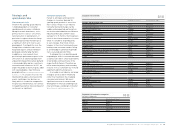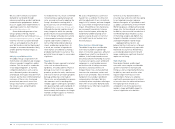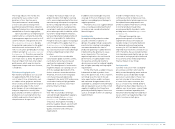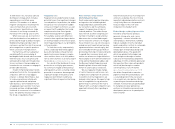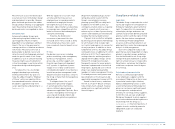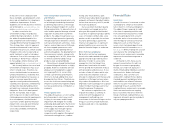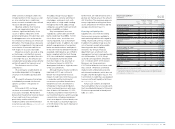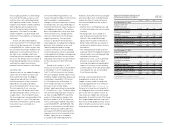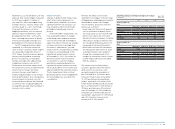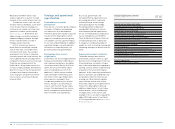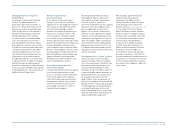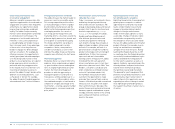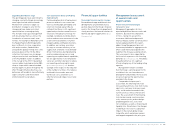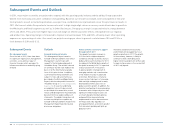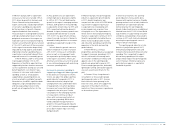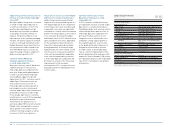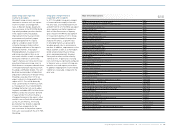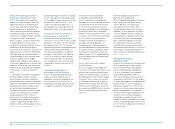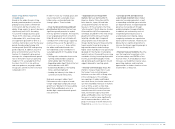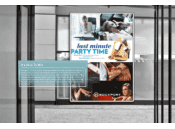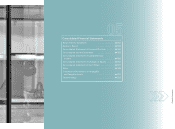Reebok 2010 Annual Report Download - page 175
Download and view the complete annual report
Please find page 175 of the 2010 Reebok annual report below. You can navigate through the pages in the report by either clicking on the pages listed below, or by using the keyword search tool below to find specific information within the annual report.
Group Management Report – Financial Review Risk and Opportunity Report 171
Emerging markets as long-term
growth drivers
According to estimates by the United
Nations, the global population is
projected to grow from currently 6.9
billion to 7.3 billion by the end of 2015
and is estimated to exceed 9 billion by
2050. A large portion of this growth is
being driven by emerging economies.
Rising employment rates and real
incomes as well as a growing middle
class are fuelling these economies –
and subsequently our industry. Sports
participation in countries such as China
or India has historically been lower than
in industrialised countries. We expect
sports participation rates to increase
over time with increasing leisure time,
investment in infrastructure and the
broadening of awareness of the benefits
of physical activity. In addition, European
and North American sporting goods
brands are often seen as highly desirable,
easily accessible, affordable luxury goods
in emerging markets, which presents an
additional growth opportunity.
Women’s segment offers
long-term potential
In our opinion, the women’s sports
market is one of the most attractive
segments in the sporting goods industry,
with women accounting for more than
a third of total spending on athletic
footwear. Our Group still generates the
majority of its revenues in men’s and
unisex categories. The adidas Group
will continue to invest in developing
women-specific product offerings in both
performance and lifestyle that emphasise
female individuality, authenticity and
style. Examples today include the adidas
Women’s Techfit apparel collection, which
was developed in collaboration with the
Berlin State Ballet, toning footwear and
apparel at Reebok, and a specifically
designed series of Burner drivers and
irons at TaylorMade for women.
Increasing consumer demand
for functional apparel
Consumer demand for functional apparel
has increased significantly in recent
years as consumers realise the benefits
of functional apparel over traditional
cotton sportswear. Improved moisture
management, superior ease of motion
and increased comfort are all factors
encouraging consumers to switch to
high-performance apparel.
The design and development of func-
tional apparel requires significantly
more expertise, product and material
research as well as production
know-how compared to low-tech apparel.
Therefore, only a few companies are
able to supply high-end functional
apparel. Our resources and our posi-
tioning as a sports performance leader
enable us to constantly develop innova-
tive products and capitalise on them. In
2010, for example, adidas launched the
Terrex Softshell Jacket. Engineered for
high-performance comfort on the trail,
it combines breathable wind protection
with specific fit characteristics that move
with the consumer.
Growing popularity of “green” products
Today’s consumers are increasingly
aware of the impact their consumption
has on the environment. Therefore, they
demand more and more products that
are environmentally benign. In 2010,
the adidas Group continued its efforts to
create meaningful product platforms to
drive growth in this area. In particular,
we focused on the extension of the
adidas ”Better Place” programme, for
which the first products were introduced
globally in 2009. Products and packaging
in the programme are designed taking
sustainability principles into account,
such as broadening the use of recycled
materials and monitoring energy use in
material and product preparation.
With all adidas Sport Performance
categories participating in the
programme, the adidas Group is
moving forward with ambitious plans
in the build-up to the London 2012
Olympic Games see Sustainability, p. 120.
It is our target that 100% of adidas
Sport Performance athletic footwear
products and 20% of apparel products
will have some sustainable content by
2012. Reebok has also been steadily
introducing eco-friendly products.
In January 2010, Reebok launched
the Kids’ Green Easy Collection of
toddler and infant footwear. The Kids’
Green Easy collection addresses
environmental concerns by utilising
recycled raw materials. Our efforts to
use environmentally friendly materials in
our products are of course not exclusive
to these specific programmes and are
also used in other categories, albeit to a
lesser extent.


